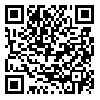Volume 3, Issue 1 (16 2004)
ijdld 2004, 3(1): 1-5 |
Back to browse issues page
Download citation:
BibTeX | RIS | EndNote | Medlars | ProCite | Reference Manager | RefWorks
Send citation to:



BibTeX | RIS | EndNote | Medlars | ProCite | Reference Manager | RefWorks
Send citation to:
Yarahmadi S, Larijani B, Javadi E, Bastan Hagh M, Pajouhi M, Malekzadeh R, et al . ANTIGLIADIN ANTIBODY IN DIABETIC PATIENTS. ijdld 2004; 3 (1) :1-5
URL: http://ijdld.tums.ac.ir/article-1-448-en.html
URL: http://ijdld.tums.ac.ir/article-1-448-en.html
Shahin Yarahmadi 
 , Bagher Larijani *
, Bagher Larijani * 
 1, Ebrahim Javadi
1, Ebrahim Javadi 
 , Mohammad-Hassan Bastan Hagh
, Mohammad-Hassan Bastan Hagh 
 , Mohammad Pajouhi
, Mohammad Pajouhi 
 , Reza Malekzadeh
, Reza Malekzadeh 
 , Mahmood Mahmoudi
, Mahmood Mahmoudi 
 , Aliereza Shafaei
, Aliereza Shafaei 
 , Mohammad-Reza Mohajeri-Tehrani
, Mohammad-Reza Mohajeri-Tehrani 
 , Ali Rajabe
, Ali Rajabe 
 , Mohammad Farshadi
, Mohammad Farshadi 


 , Bagher Larijani *
, Bagher Larijani * 
 1, Ebrahim Javadi
1, Ebrahim Javadi 
 , Mohammad-Hassan Bastan Hagh
, Mohammad-Hassan Bastan Hagh 
 , Mohammad Pajouhi
, Mohammad Pajouhi 
 , Reza Malekzadeh
, Reza Malekzadeh 
 , Mahmood Mahmoudi
, Mahmood Mahmoudi 
 , Aliereza Shafaei
, Aliereza Shafaei 
 , Mohammad-Reza Mohajeri-Tehrani
, Mohammad-Reza Mohajeri-Tehrani 
 , Ali Rajabe
, Ali Rajabe 
 , Mohammad Farshadi
, Mohammad Farshadi 

Abstract: (9211 Views)
Celiac disease and typel diabetes mellirus have been linked to the same HLA markers and chromosomal loci, which may account for the concurrence of the two disorders in a significant number of patients. This study was designed to investigate the frequency of anti-gliadin antibodies, a marker for celiac disease, in diabetic patients.
Methods: In this study, 182 diabetic patients (52 with typel and 130 with type2 diabetes) were screened for anti-gliadin IgG by indirect immunofluorescence. Age range was 3-29.5 and 42-65 years for type 1 and type 2 diabetes groups.
Results: Anti-gliadin IgG was found in 1.9% and 1.5% of patients with type land type 2 diabetes. In Tehran, 0.02% of healthy blood donors have been reported to be seropositivitive for anti-gliadin IgG.
Conclusion: The prevalence of anti-gliadin seropositivity in type 1 and type 2 diabetics, was respectively 30 and 24 times higher than the general population of Tehran. This concurs with other reports indicating higher occurrence of celiac disease in diabetic populations. The rather low sensitivity and specificity (both around 80%) of the antigliadin antibody test has made it a suboptimal diagnostic test. However, it is quick and inexpensive and can be suitable for screening programs. We recommend the test in all at-risk populations including diabetics.
Methods: In this study, 182 diabetic patients (52 with typel and 130 with type2 diabetes) were screened for anti-gliadin IgG by indirect immunofluorescence. Age range was 3-29.5 and 42-65 years for type 1 and type 2 diabetes groups.
Results: Anti-gliadin IgG was found in 1.9% and 1.5% of patients with type land type 2 diabetes. In Tehran, 0.02% of healthy blood donors have been reported to be seropositivitive for anti-gliadin IgG.
Conclusion: The prevalence of anti-gliadin seropositivity in type 1 and type 2 diabetics, was respectively 30 and 24 times higher than the general population of Tehran. This concurs with other reports indicating higher occurrence of celiac disease in diabetic populations. The rather low sensitivity and specificity (both around 80%) of the antigliadin antibody test has made it a suboptimal diagnostic test. However, it is quick and inexpensive and can be suitable for screening programs. We recommend the test in all at-risk populations including diabetics.
| Rights and permissions | |
 |
This work is licensed under a Creative Commons Attribution-NonCommercial 4.0 International License. |



